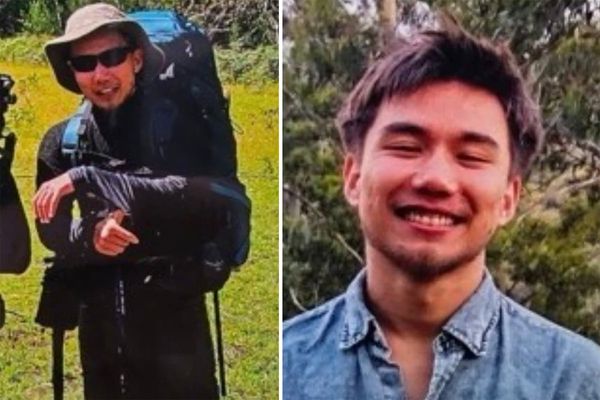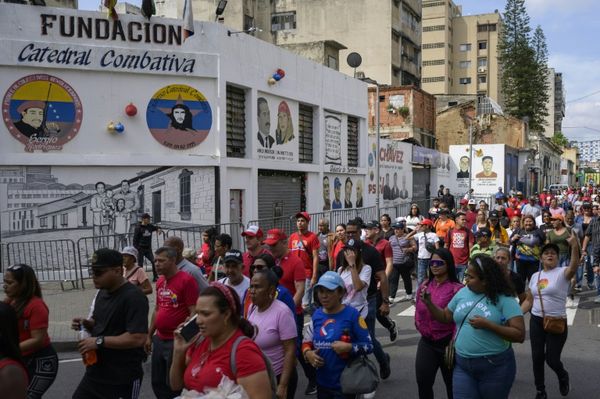
Da 5 Bloods
Director - Spike Lee
Cast - Delroy Lindo, Clarke Peters, Norm Lewis, Isiah Whitlock Jr, Chadwick Boseman, Jonathan Majors, Jean Reno
In Da 5 Bloods, director Spike Lee attempts to unpack the entire history of the black American wartime experience — from honouring the first black man who died fighting for a country that didn’t fight back for him, to something as urgent as the murder of George Floyd. This isn’t an easy task, but Da 5 Bloods, out on Netflix, isn’t a straightforward film.
Its story spans decades, and sends four black Vietnam veterans back to their old battleground in a quest to locate and repatriate the remains of their commander, who was killed in combat. But the ‘bloods’ have an ulterior motive, too. During one of their skirmishes in the war, they came across a stash of gold, which they promptly hid. Now, years later, each of them damaged in their own way — while one of them is broke, another is riddled with PTSD — they decide to combine their rescue mission with a treasure hunt.
Watch the trailer for Da 5 Bloods here
On paper, that premise would probably remind you of The Treasure of Sierra Madre. But what Lee is trying to do here is to re-contexualise the war movie — and popular cinema — from a black perspective. Indeed, the original script by Danny Bilson and Paul De Meo called for white soldiers to return to Vietnam. But Lee and his BlackKklansman collaborator Kevin Willmott subsequently performed a rewrite and retooled Da 5 Bloods into what is unmistakably ‘a Spike Lee joint’.
Despite laying down their lives for America, in war after war, black people find no representation in movies about those wars. Some years ago, Lee publicly criticised filmmaker Clint Eastwood for completely ignoring the contribution of black soldiers in his back-to-back World War 2 movies, Flags of our Fathers and Letters from Iwo Jima, which were released in 2006. Almost as a retort, Lee released the first war film of his career, Miracle at St Anna, in 2008, and arranged for a print to be sent to Eastwood.
Da 5 Bloods is his retort to decades of Hollywood storytelling from a white perspective. Lee is snatching the narrative away from the powerful white men in charge of shaping it, and rewriting it — methodically, patiently, and furiously.

Some of his tricks are downright petty, but glorious to behold. Take, for instance, his reprisal of the Ride of the Valkyries, perhaps the most popular piece of music to be associated with the Vietnam War, iconic for its emphatic use in director Francis Ford Coppola’s Apocalypse Now. In Da 5 Bloods, the same bombastic song plays not when white American soldiers are going to decimate an entire village, but when a bunch of out-of-shape, middle-aged black men are gliding glacially down a stream.
Lee’s big stylistic flourish in Da 5 Bloods, however, is to fiddle around with aspect ratios and film formats in the flashback sequences. Paired with his ingenious idea to retain his older central cast for these sequences, Lee achieves something quite special. By capturing the war scenes in 16 mm (as opposed to large format digital cinematography for the ‘present-day’ sequences), and framing them in a 4:3 aspect ratio, Lee instantly evokes memories of the Vietnam War, as it was televised back in the day. These are not just his memories, the filmmaker seems to be saying, but the audiences’ as well. We’re in this together.
And none of those memories likely involve black people. They’ve been left to struggle alone; ignored, written out of the story. Necessity is the mother of invention they say, and perhaps because Lee couldn’t afford to digitally de-age his characters in the manner that Martin Scorsese did in The Irishman, he leaves them cosmetically untouched in the flashbacks — no de-ageing makeup, no visual effects. They’re simply old men, who’ve reinserted themselves into the past.
But one of them is stuck in time. Chadwick Boseman plays the fifth ‘blood’, the fallen ‘Stormin’ Norman’, opposite a central cast that includes veteran character actors Delroy Lindo, Clarke Peters, Norm Lewis and Isiah Whitlock Jr. Norm is described by his old friends as ‘our Malcolm and our Martin’ — it was Norm who suggested that they use the discovered treasure to help their community back home; to treat it as the reparations that they are owed. And Boseman delivers a performance befitting a movie star. One brief shot in particular, in which Lee’s camera tracks the Black Panther actor as he fires a rifle into the trees, would’ve surely elicited whoops among the crowd had the movie been released in theatres.

But standing tall, and almost as isolated from the rest of the cast as his character, is Lindo’s performance as the PTSD-ridden Paul. He’s the only member of the ‘bloods’ who voted for Donald Trump, and proudly wears a ‘Make America Great Again’ hat. It’s just one of the many ways that Paul has chosen to lash out at a world he feels has let him down. Lee said in an interview that Lindo would immediately take the hat off the second he called ‘cut’.
While the rest of the ‘bloods’ have moved on from their traumatic past in one way or another, Paul is the only one still struggling with it. He’s the wildcard, and several of his scenes are among the best in the film. One, towards the end of the movie, in which he delivers a monologue directly into the camera — his eyes manic with decades of exploding energy as he preaches the Gospel of Spike Lee — is a sight to behold.
Also read: When They See Us review: Netflix and Ava DuVernay are doing the Lord’s work
With two-and-a-half hours to work with, the legendary filmmaker not only addresses pertinent themes like the idea of the oppressed turning into the oppressor, and the sheer urgency of resisting Trump, but also finds time to insert all his directorial trademarks — the double-dolly shot, the quick-cutting hugs, and that intense fourth wall-breaking monologue.
Da 5 Bloods couldn’t have been more timely, with its quick postscript that honours the Black Lives Matter movement, and the overwhelming sense of pride that it exudes. Every time a black person of significance is mentioned in conversation, Lee cuts to either archive footage or still photographs of them, in a way inspiring himself and his characters as they go along on their majestic mission. But this timeliness is a part of the tragedy that the film is trying to address. As long as the blood of minorities across the world continues to be spilled, stories such as this will always be relevant.
Follow @htshowbiz for more
The author tweets @RohanNaahar







